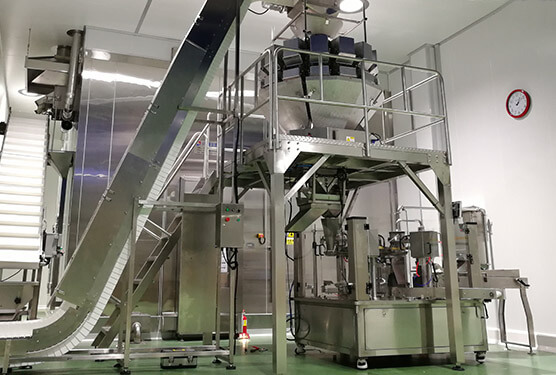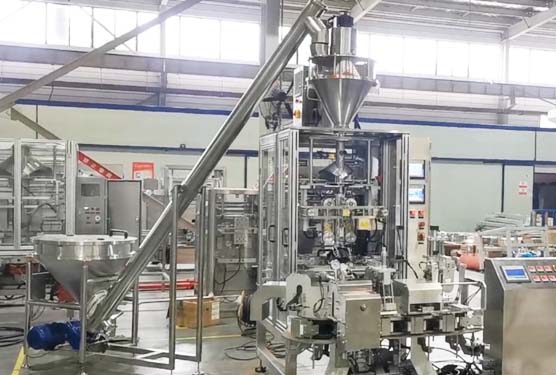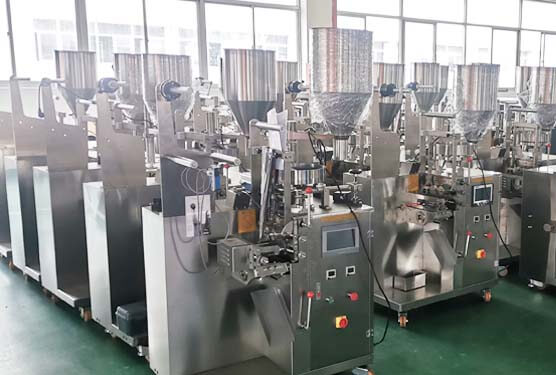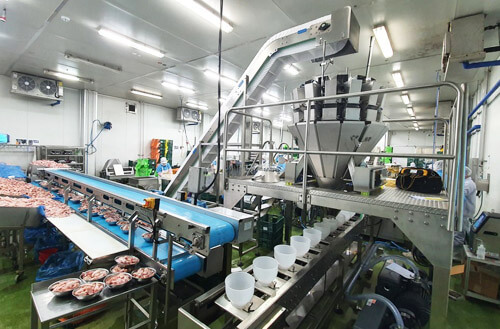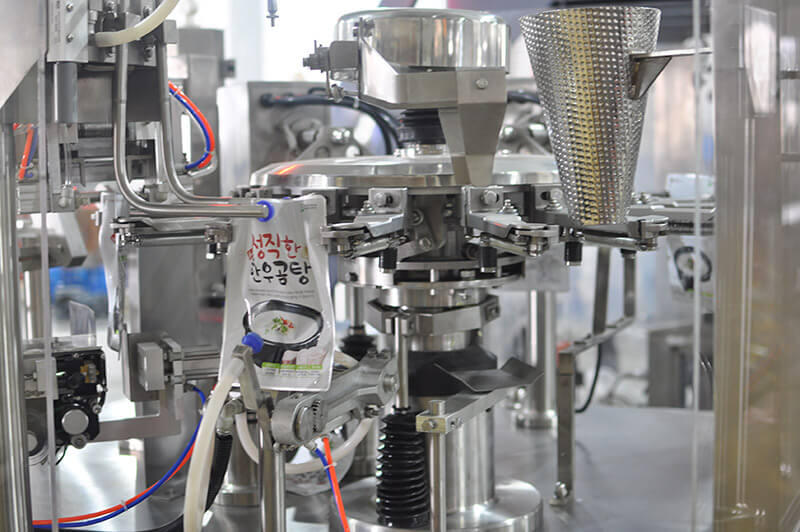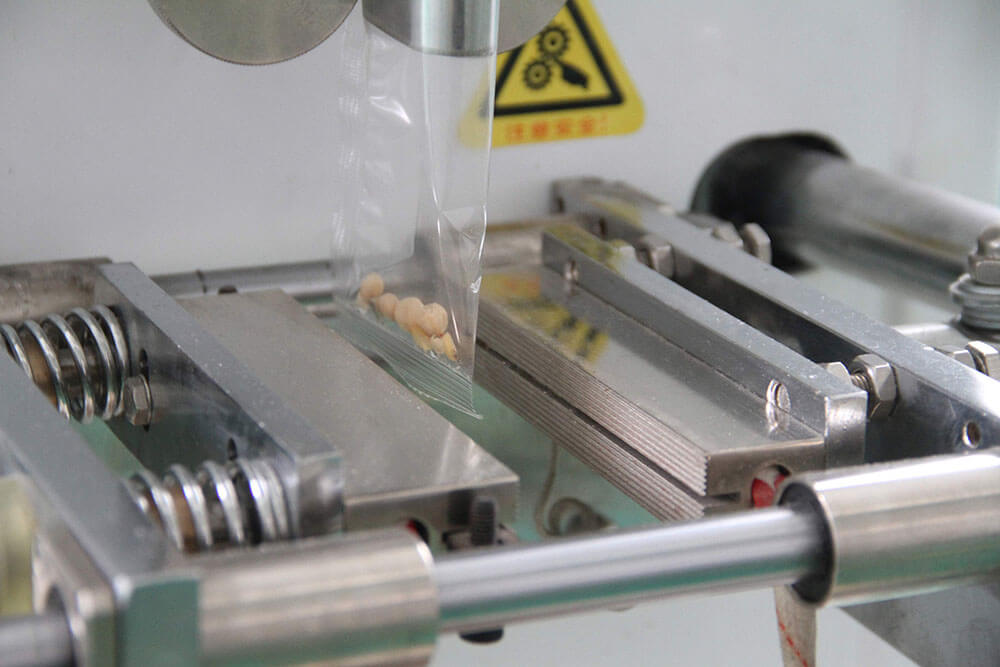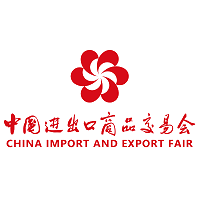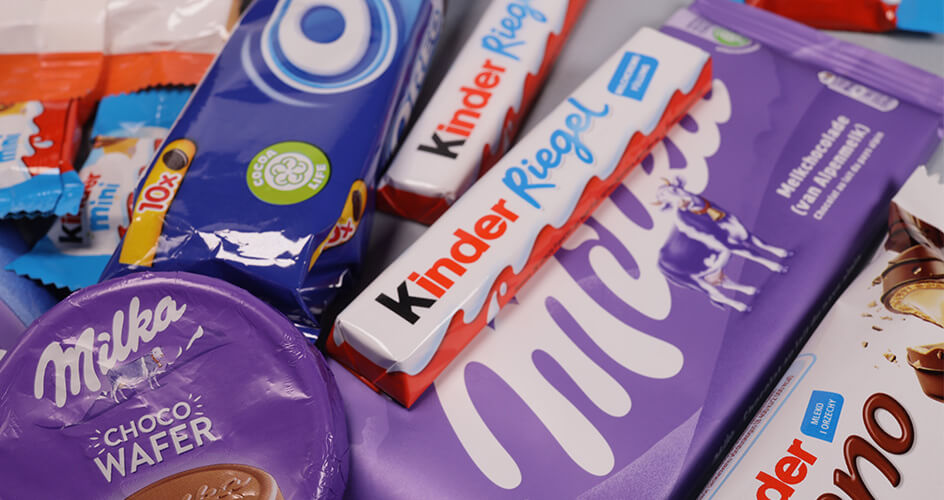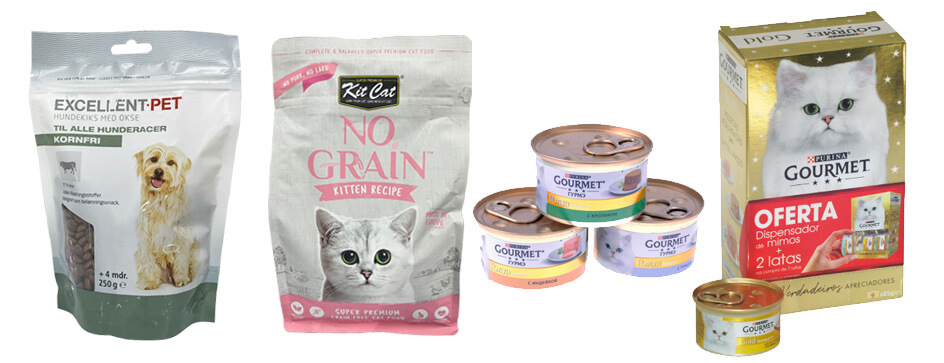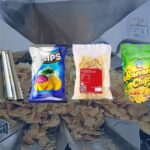There are many things involved with packaging powdered products effectively. Having the right filling and sealing equipment and skilled operators running it. Next, I will introduce you to key points about powder packaging.
The Flow Characteristics of Your Product
Powders are generally divided into two types based on their flowability. One is free-flowing powder and the other is non-free-flowing powder.
The flowability of your product determines what kind of filling machine you choose. If you don’t know the flowability of your product and choose the wrong machine, it might cause blockages or inconsistent flow during the filling process.
What is Free-Flowing Powder?
Free-flowing powders don’t stick together. One of their characteristics is that they can flow through a very small hole by gravity and flow freely when you pour them. When you apply pressure to them, their particles don’t get compressed. When you manipulate them, they don’t hold their shape. Because of the free-flowing properties, you can fill them with a regular volumetric or auger type powder filling machine. examples of free-flowing powders are table salt and granulated sugar.

What is Non-Free-Flowing Powder?
Non-free-flowing powders stick together. They usually hold their shape when you manipulate them. And you can apply pressure to compress them. Because they don’t flow, they require special filling systems to help them be dispensed efficiently into containers. Common non-flowing powders are milk powder and brown sugar.

A Quick Test to Determine
So how can you tell if your product is free-flow or non-free-flow? There is a simple but unscientific way you can make an initial determination. That is “the finger test”. Poke your hand into the powdered product and if the powder is compressed and the indentation of your finger is still visible on the powdered product after you remove your finger, it is likely a non-free-flowing powder product. However, when you remove your finger and there is no lasting indentation left, it is most likely a free-flowing powder product.
The Bulk Density of Your Product
The bulk density of a powder is the mass to volume ratio. It takes into account the spaces between particles and is therefore usually lower than the material’s true density. The bulk density is closely related to the flowability of the powder and also affects the packing efficiency and compressibility of the powder. It also reflects the degree of compaction when pressure is applied to it.
The measurements of bulk density can be done in an uncompacted state or after some degree of compaction to simulate real-world conditions. Free-flowing powders will not be compressed so much and have a low bulk density. However, non-free-flowing powders will usually be compressed heavily and have a higher bulk density. The higher the degree of compaction, the higher the bulk density will be.
Factors Affecting Bulk Density
- Moisture: Moisture can cause the particles to stick together and take up less space, which will increase the powder bulk density.
- Composition: There is no doubt that the inherent density of the material also affects the bulk density. Materials with higher density will naturally have higher bulk density.
- The amount of air between particles: The more air that’s in between powders, the more volume and lower powder bulk density.
- The shape of the particles: Irregularly shaped particles may not be able to be tightly packed, which will create more voids and lower powder bulk density.
The Importance of Bulk Density in Powder Packaging
The bulk density of your powder directly affects the size and type of your packaging and the type of filling machine you need. As I mentioned above, the voids between particles of your product affect the bulk density. Then the different sizes of those voids determine the size and type of your packaging. For the same weight of product, the larger voids between particles will require more space. And the smaller voids between particles will require less space. So the corresponding packaging will be different.
An Example to Help You Understand
Here’s an example. Let’s say you want to packaging 50 grams of coffee beans and 50 grams of coffee powder (even though coffee beans aren’t a powder product, the reason is the same). Because the voids between the products aren’t the same, the space you need to packaging the coffee beans is much larger than the space you need to packaging the coffee powder. So the packaging you need will be bigger. Bulk density affects not only the size of your package and the type of filling machine you need, but also the speed at which you can packaging.
The Dustiness of Powder Packaging
Dust problems happen when you packaging dusty products. And non-free-flowing powders like flour can form dust clouds during dispensing. They can float around and stick to any surface. Dust problems affect the working of the machine and the machine may suffer serious mechanical problems. It can hinder the packaging process. It also could affect the sealing of the package during the sealing process. Leading to a weak seal or even a sealing failure.

Measures for Dust Control
- Enclosed Jaw Drives: The moving parts of jaw drive need to be enclosed. That enclosure design will protect jaw drive from dust.
- Proper IP Ratings: If your powder packaging machine is an IP rated machine that is dust-protected and dust-tight, it will keep the particles from getting inside of your machine enclosure. Specifically about the IP rating, the first number of an IP Rating tells you how much protection the machine has against solids. For example, an IP65-rated powder packaging machine is totally protected against dust. But an IP54-rated powder packaging machine is only partially protected against dust.
- Dust Hoods: The dust hood collects and removes dust generated by the powder packaging machine during filling and sealing. The dust hood has a smooth inner surface so that the dust is less likely to stick to the surface and flows easily. The powders are directed to the fill spout. It will also be equipped with a baffle system to ensure that the powder does not escape from the hood as it is drawn into the machine.
- High-Speed Continuous Motion Packaging: A high-speed, continuous motion powder packaging machine maintains a continuous product flow into the container. The motion of the packaging film creates a continuous flow of air to the bottom of packaging. That flow of air helps to direct any stray particles into your packaging.
Types of Powder Filling Technologies
Different powders require different filling techniques. There are two common types of filling methods. One is volumetric powder filling and the other is gravimetric powder filling.

Volumetric Powder Filling
Volumetric powder filling determines the amount of product to be filled according to the volume of the product. For example, the number of revolutions of auger filler is directly proportional to the amount of filling in the container. You can adjust its rotation speed and thus make it increase its revolutions, and finally to achieve the purpose of increasing the amount of filling.
There are many modern volumetric powder filling machines that are equipped to measure the weight of the powder with a corresponding weight cell. It effectively records and shows the weight of the fill. You can adjust for any changes in the density of the fill and make your volumetric filling more accurate.

Gravimetric Powder Filling
Gravimetric powder filling relies on the weight of the powder to accurately dispense the amount of powder product into the container. It can be used in the dispensing of free-flowing powders. Using gravity to flexibly dispense the powder product. It is suitable for powders with unstable and uneven density.
Types of Powder Packaging
There are many types of powder packaging you can choose from for your product. Here are three common types of powder packaging.
Pouches
There are various types of pouch packaging. Each with its own particular characteristics. You can customize this type of packaging into a wide range of pouches with special features like zippers, handles or nozzles. You can also design it in different shapes, sizes, and colors. It will meet your needs for a variety of different products.

Cans
This kind of packaging container is mainly designed using aluminum, zinc-plated steel or tin-plated steel. It provides strong and durable material for powder packaging and has a large capacity. It can provide your products with protection against light, moisture, and air. It provides strong protection for your powder products. And it is very suitable for secondary use. For example, when you run out of the product of the coffee powder canister. Then you wash the can, and when it dries. Use it to store sugar or salt.

Stick Packs
This packaging presents a long thin tube that is designed for single use and is perfect for carrying around. You can utilize this customized packaging material to package a variety of powdered products, like coffee powder or various drink mixes.
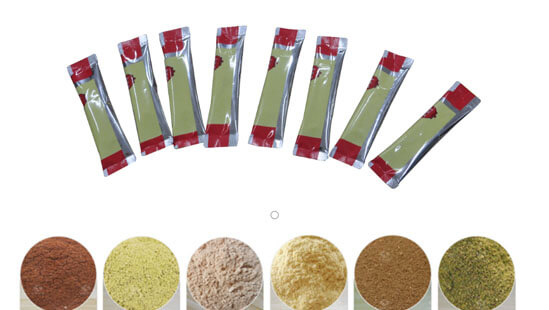
Conclusion
A deep understanding of your product’s flow characteristics, bulk density, and dustiness will definitely make your powder packaging business more effective. It will help you to better select powder filling and sealing equipment. And when problems occur during filling or sealing, you may also be able to deduce the cause of the problem based on these key points and solve it.

